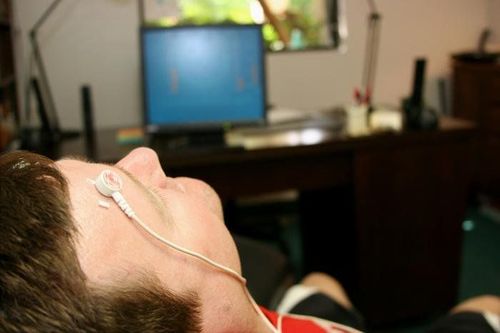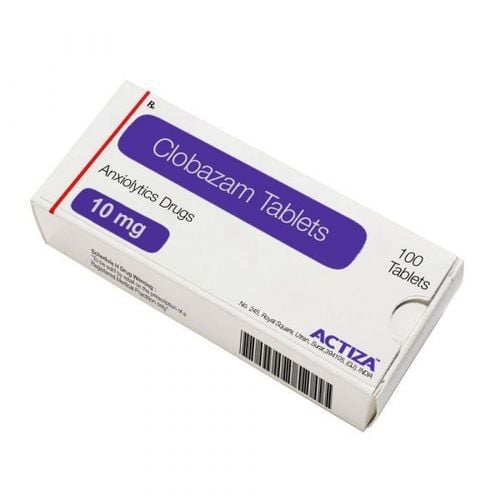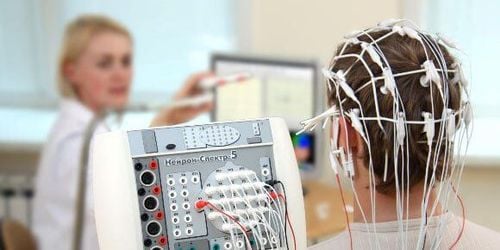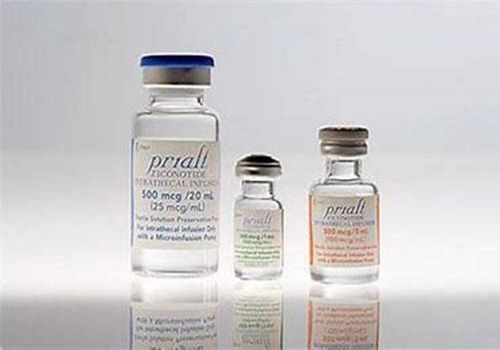This is an automatically translated article.
Biofeedback sounds like science fiction but is actually a medical therapy that helps with a variety of health problems, including epilepsy. So how does biofeedback affect the treatment of epilepsy?
1. What is biofeedback?
Biofeedback, developed in the 1940s, is a technique of self-training the mind through training the body. For example, a patient with a migraine can train their body to avoid a migraine or reduce the severity of a headache. Biofeedback is a way of harnessing the power of the mind and being aware of what's going on inside the body to control a number of factors related to health.
The purpose of biofeedback therapy is to help the patient consciously control some involuntary body function such as skin temperature, heart rate, or blood pressure. So biofeedback therapy is used to help prevent or treat health conditions including migraines, chronic pain, urinary incontinence and high blood pressure, epilepsy, and hyperactivity disorder. reduced attention,....
Specifically, the patient wears a sensor to "hear" or "see" certain bodily functions such as pulse, digestion, body temperature, and muscle tension. Through seeing the reflections of what is going on inside the body, the patient learns to control the uncertainties in monitoring information such as heart rate, blood pressure,... In other words, the mind through Perception trains biological systems to learn skills.
2. How does biofeedback therapy work?
Researchers aren't exactly sure how or why biofeedback works, but they've found biofeedback promotes relaxation, which can help alleviate some stress-related conditions straightening or recovering nerves.
In a biofeedback experiment, electrodes are attached to the skin of the tester, using finger sensors. These electrodes or sensors send signals to a monitor, which displays sounds, lights flashing, or descriptions for heart rate and breathing rate, blood pressure, skin temperature, sweating, or muscle activity. . When the tester is stressed, these functions change: Heart rate increases, muscles contract, blood pressure increases, sweating, and rapid breathing. Testers were able to see these stress responses while on the screen. Then there are immediate responses as the mind tries to stop them.

Liệu pháp phản hồi sinh học giúp người bệnh phục hồi thần kinh
A biofeedback therapist will help the patient practice relaxation exercises to control various body functions through biofeedback therapy. Each biofeedback therapy session lasts approximately 60 to 90 minutes. Typically, practitioners can begin to see the benefits of biofeedback therapy within 10 training sessions.
Several different relaxation exercises are used in biofeedback therapy, including:
Deep breathing One of the ways to practice deep breathing biofeedback is to repeatedly squeeze the muscles alternately and then It relaxes and relaxes different muscle groups. Focusing on a specific image like the color and texture of an orange to focus the mind and make the body feel more relaxed is also a way to practice deep breathing in biofeedback therapy.
In addition, mindfulness meditation that focuses on thinking and eliminating negative emotions is a useful biofeedback practice. When heart rate slows, blood pressure drops, and muscle tension is reduced, there's immediate feedback on the screen, so learners learn to control these functions on their own, without the need for a life-support device. learn.
Electromyography (EMG) This biofeedback training method will measure muscle activity and tension, can be used to treat back pain, headaches, anxiety disorders, muscle recovery after trauma and urinary incontinence.
Heat By measuring skin temperature, biofeedback can be used in the treatment of headaches and Raynaud's syndrome.
Neurofeedback or electroencephalogram (EEG) This is neurofeedback by measuring brain waves. Neurofeedback or electroencephalogram (EEG) is used to treat attention deficit hyperactivity disorder (ADHD), epilepsy, and other seizure disorders.
Transdermal Electrical Activity (EDA) This biofeedback helps control sweating and can be used for pain relief and anxiety relief.
Heart Rate Variation (HRA) Biofeedback is done through heart rate measurement. This biofeedback can be used to treat anxiety, asthma, chronic obstructive pulmonary disease (COPD), and irregular heartbeats.

Phản hồi sinh học có thể thực hiện qua việc đo nhịp tim
3. What role does biofeedback play in the treatment of epilepsy?
Biofeedback is used in the treatment of epilepsy to reduce the frequency of seizures in patients. Specifically, to treat epilepsy with biofeedback training, experts will instruct the use of electrical sensors to alter brain waves.
Siegfried Othmer, PhD in Encino, Calif., explains in an interview: “In people with epilepsy, a part of the brain becomes unstable, and sometimes this unstable part activates the other part of the brain. the rest of the brain that causes the seizure. Neurofeedback can help stabilize those areas of instability and reduce the occurrence of seizures.”
Through studies, biofeedback has been shown to significantly reduce seizures in people with epilepsy who cannot control symptoms with conventional medications.
Self-management of epilepsy with biofeedback is not easy, it takes time, perseverance and consistency to practice successfully. If the patient is determined to choose to pursue this therapy, be patient, do not reduce or give up halfway and strictly adhere to the treatment plan.
Please dial HOTLINE for more information or register for an appointment HERE. Download MyVinmec app to make appointments faster and to manage your bookings easily.
References: webmd.com, ncbi.nlm.nih.gov












